
If you keep chickens in your backyard there’s a high chance you’re extremely attached to them. Watching them peck around outdoors in bitterly cold weather, however, may mean you’re anxious to learn how to keep chickens warm in winter.
If my mom is anything to go by, at the sign of the slightest wind and rain she will stare concernedly out of the window and say: ‘I hope the chickens are alright in this weather.’
Of the experts I spoke to, one has been keeping chickens for more than 20 years and the other is a fifth generation chicken keeper. Unsurprisingly, they were both delighted to share their advice on keeping chickens warm during winter when temperatures drop. And just as importantly, what not to do.
If you’re wanting to follow in the footsteps of Carrie Underwood or Meghan and Harry and set up a chicken coop, it’s handy to know that chickens are much better at keeping themselves warm than we are.
So even though you might be freezing cold when you’re out in the backyard, it doesn’t mean your chickens are feeling the same.
‘Anyone who has a down comforter or coat knows how insulating and warm feathers are,’ says Deborah Niemann of The Thrifty Homesteader.
But even hearing this, if you’re a new chicken owner, you might still need some reassurance that they are not uncomfortable in icy weather, let alone unsafe.
1. A secure structure is needed
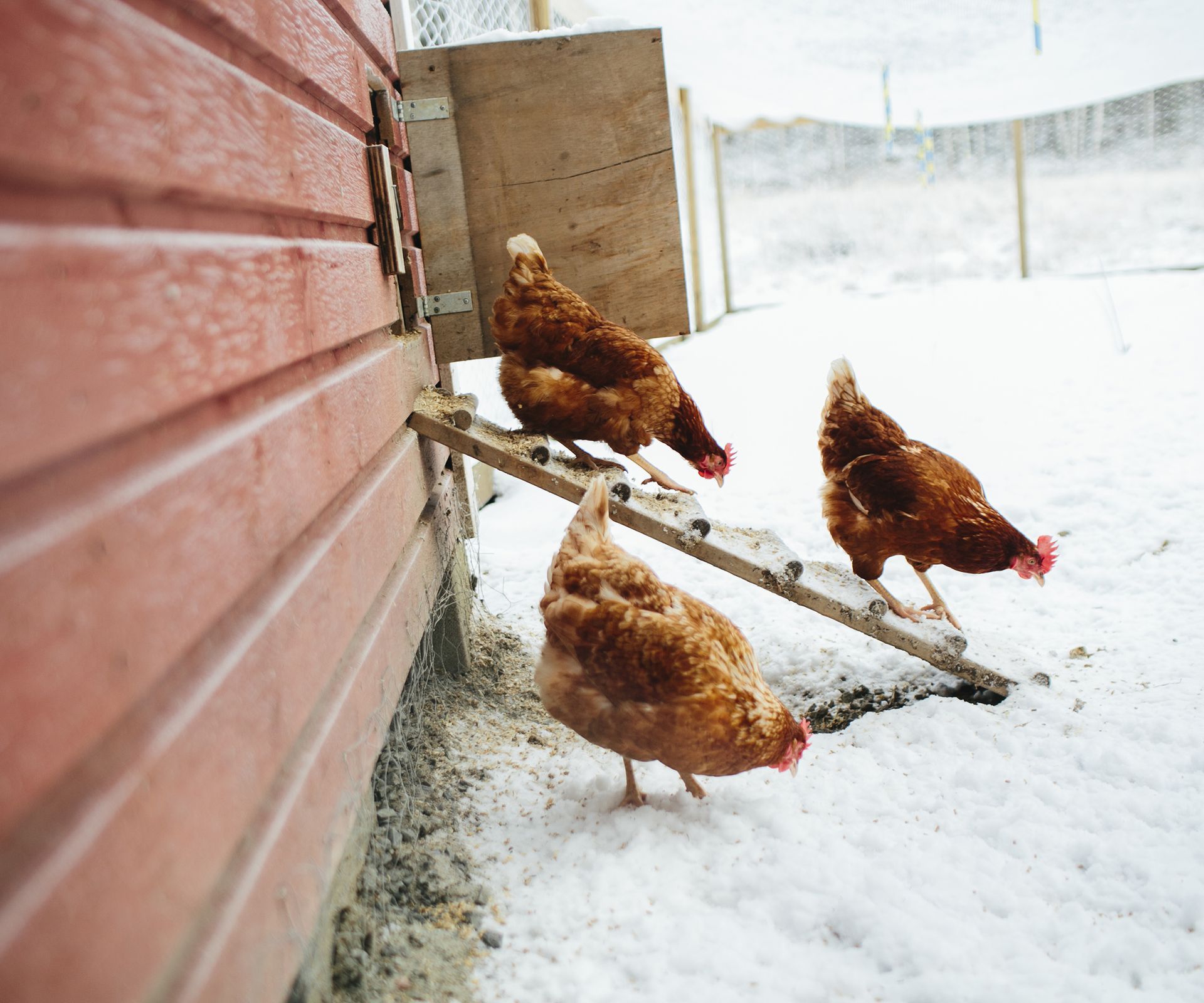
Chicken down is a fantastic insulator
‘If you’re backyard farming in all but the most brutal climates, chickens would probably survive outdoors, as long as they can get out of the wind and elements,’ says founder of the Fresh Eggs Daily blog Lisa Steele.
‘But a secure structure is best not only to keep them warmer using their body heat, but also safe from nocturnal predators,’ she urges.
‘Chickens do need shelter so that they can stay dry and out of the wind, but they don’t need to be brought into your house,’ says Deborah Niemann.
2. Insulate the coop
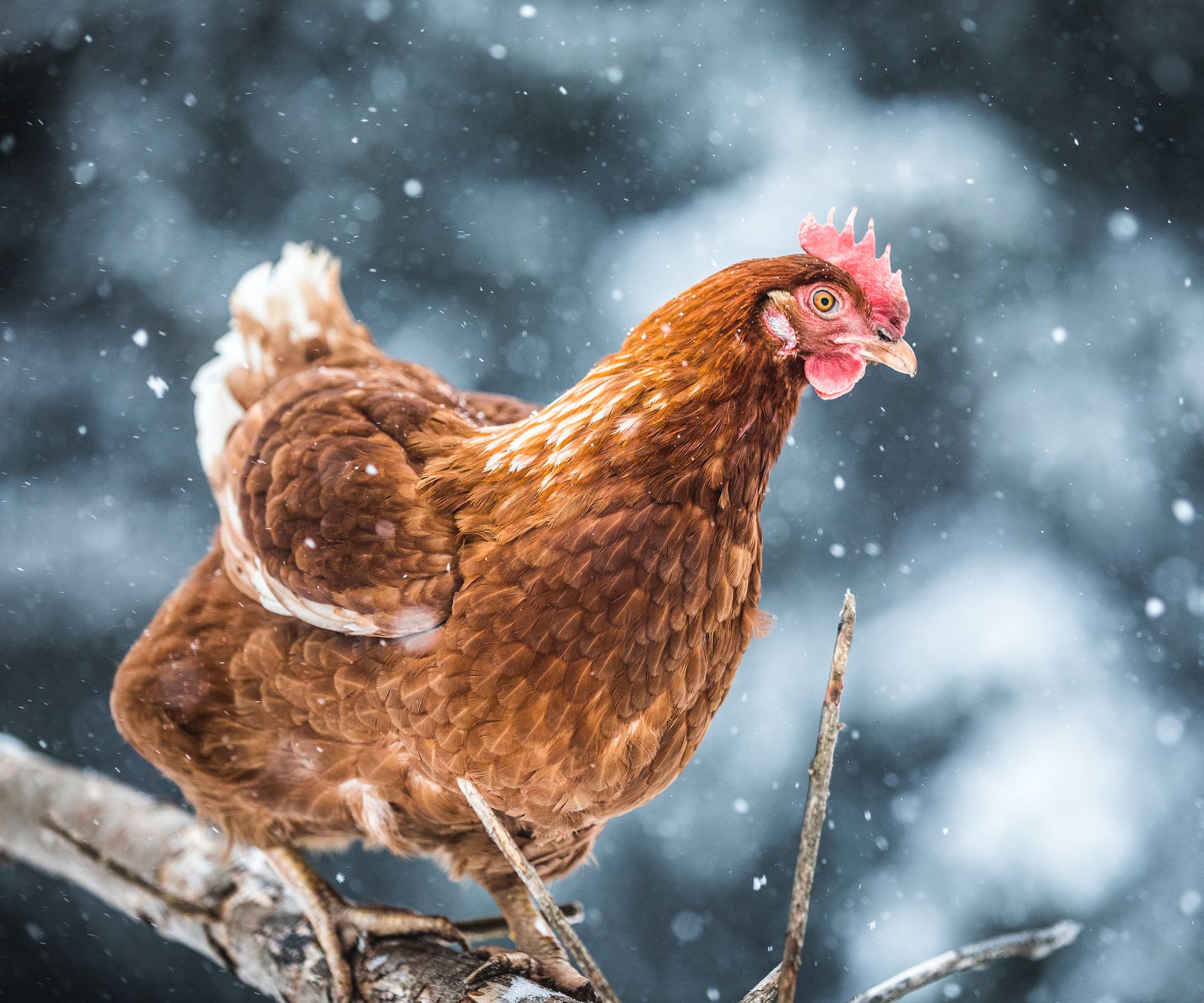
If you insulate your hen house be sure to leave some ventilation
‘Insulating the walls and roof of a coop is a good idea,’ explains Lisa Steele. ‘Any type of insulation can be used as long as it is covered up with plywood or other building materials.’
‘Chickens will eat almost anything, (which is why you should keep them well away from your vegetable garden) so it’s imperative to make sure they can’t get at any type of insulation you might use. Even just installing a wall of plywood sheets over the bare studs in the chicken coop, creating an air pocket in between the outer wall and inner wall can help to keep the coop warmer in the winter,’ she says.
3. Add more bedding
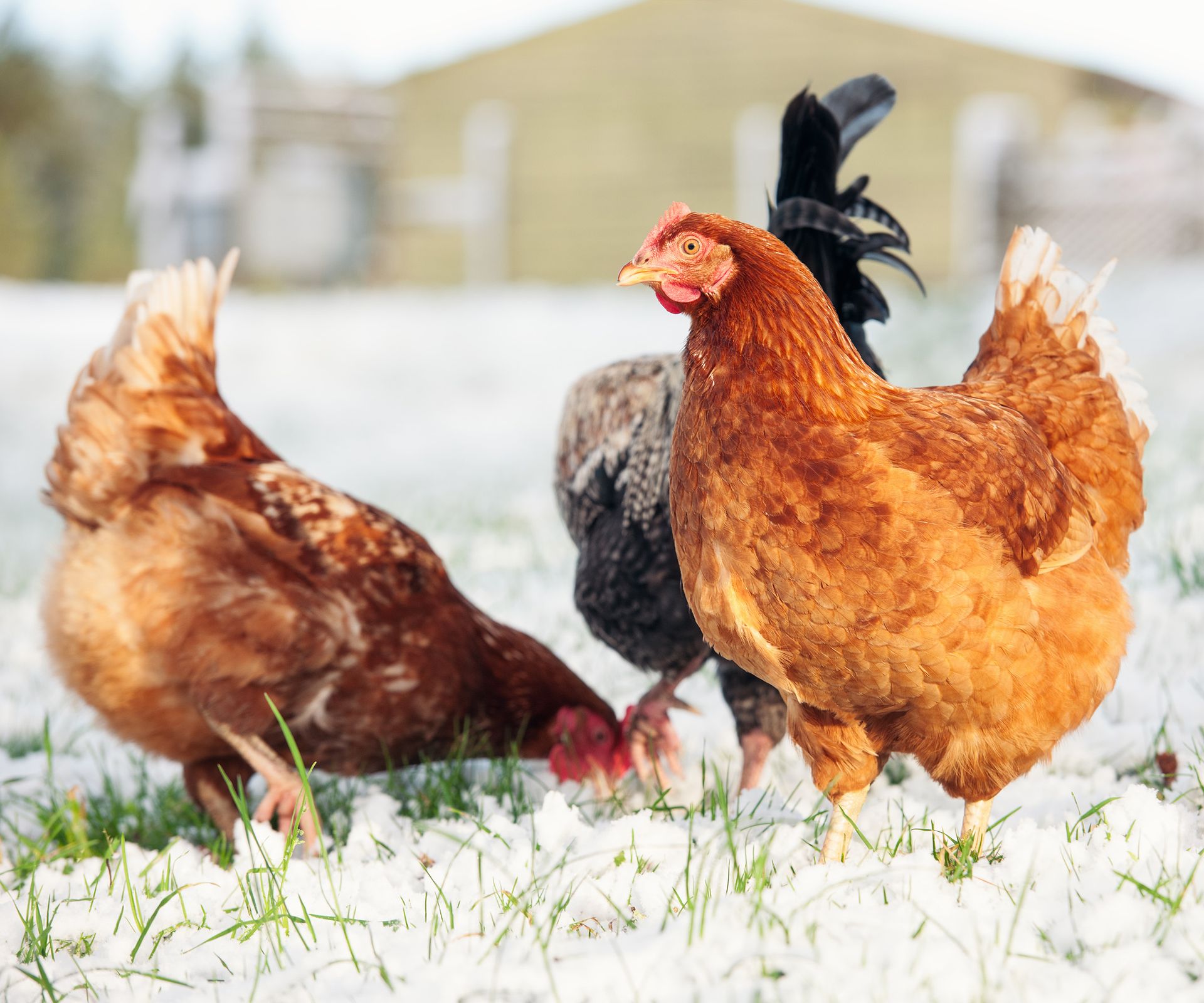
A thicker layer of straw in winter will create a cozy bed for chickens
Though they might sometimes peck at one another during the day, Chickens are great at keeping each other warm at night. But during cold weather try to ensure they have plenty of soft bedding to snuggle into and help them get a cozy night’s sleep.
‘Adding a nice thick layer of straw or other warm bedding on the floor to help insulate the coop, and offering whole grains and seeds to the flock before bedtime are all ways to keep chickens warm without heat,’ advises Lisa Steele.
4. Keep it well ventilated
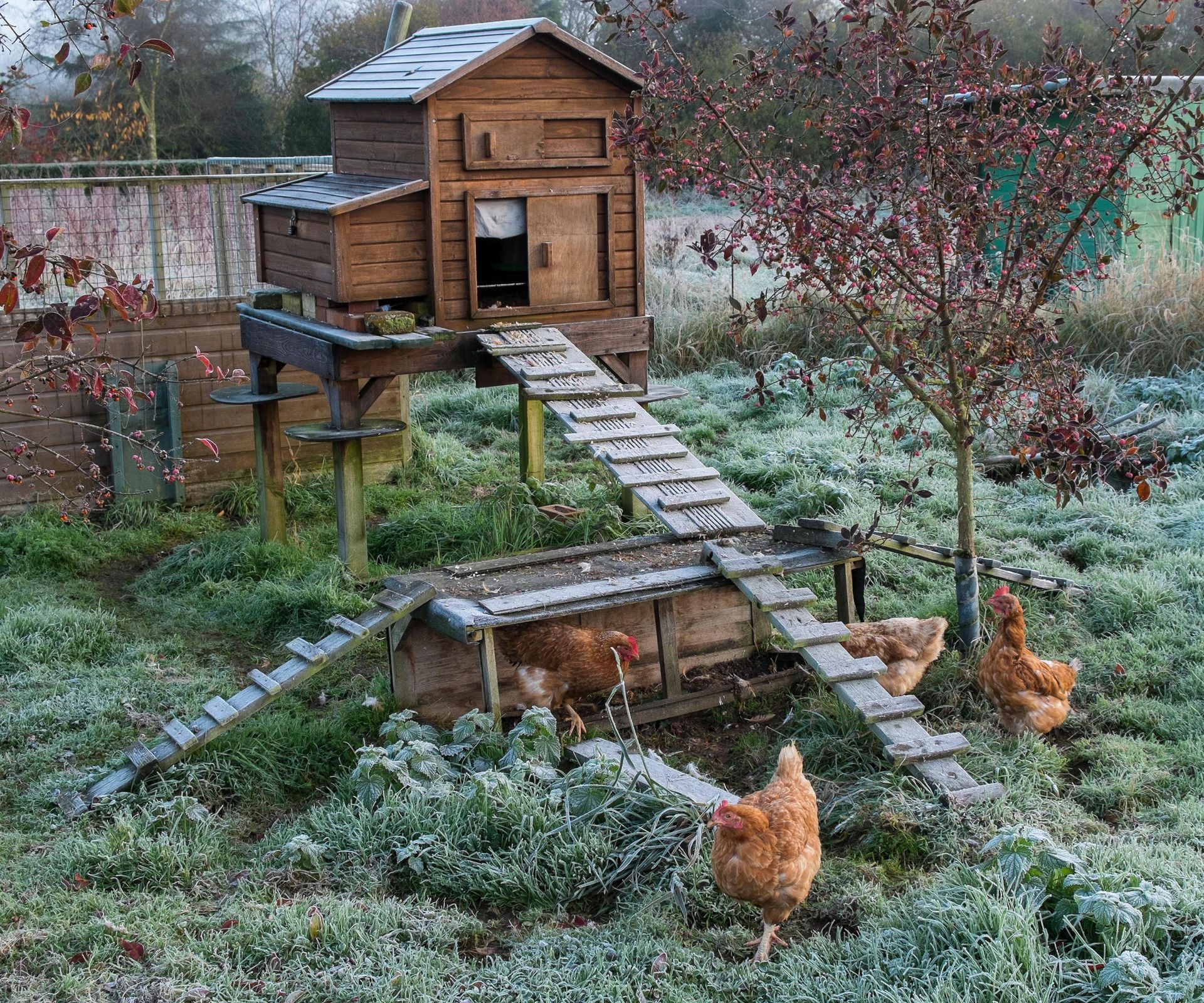
Too much humidity can cause more problems than cold
‘Humidity build-up is a major cause of combs freezing, when combined with freezing temperatures,’ explains Deborah. Who would even go as far to say that insulation around your coop isn’t necessary.
‘In my experience, insulation is a waste of money because the coop needs to be well-ventilated but not drafty,’ she says.
‘We keep our coop door open during the day, 12 months of the year, unless it’s snowing because we don’t want to have to shovel snow out of the coop,’ says Deborah, who lives in Illinois where she’s seen temperatures drop to 25 below freezing.
You may be wary of letting air in from the outside when temperatures are low but it is really important for the health of your chickens as you need ventilation to allow ammonia fumes and humidity to escape.
‘I know of instances where people who insulated their coop and wound up with chickens that had respiratory problems due to the poor air quality. Then they realized they should open windows in winter, and this improved the situation,’ Deborah says.
5. Don’t use heat lamps
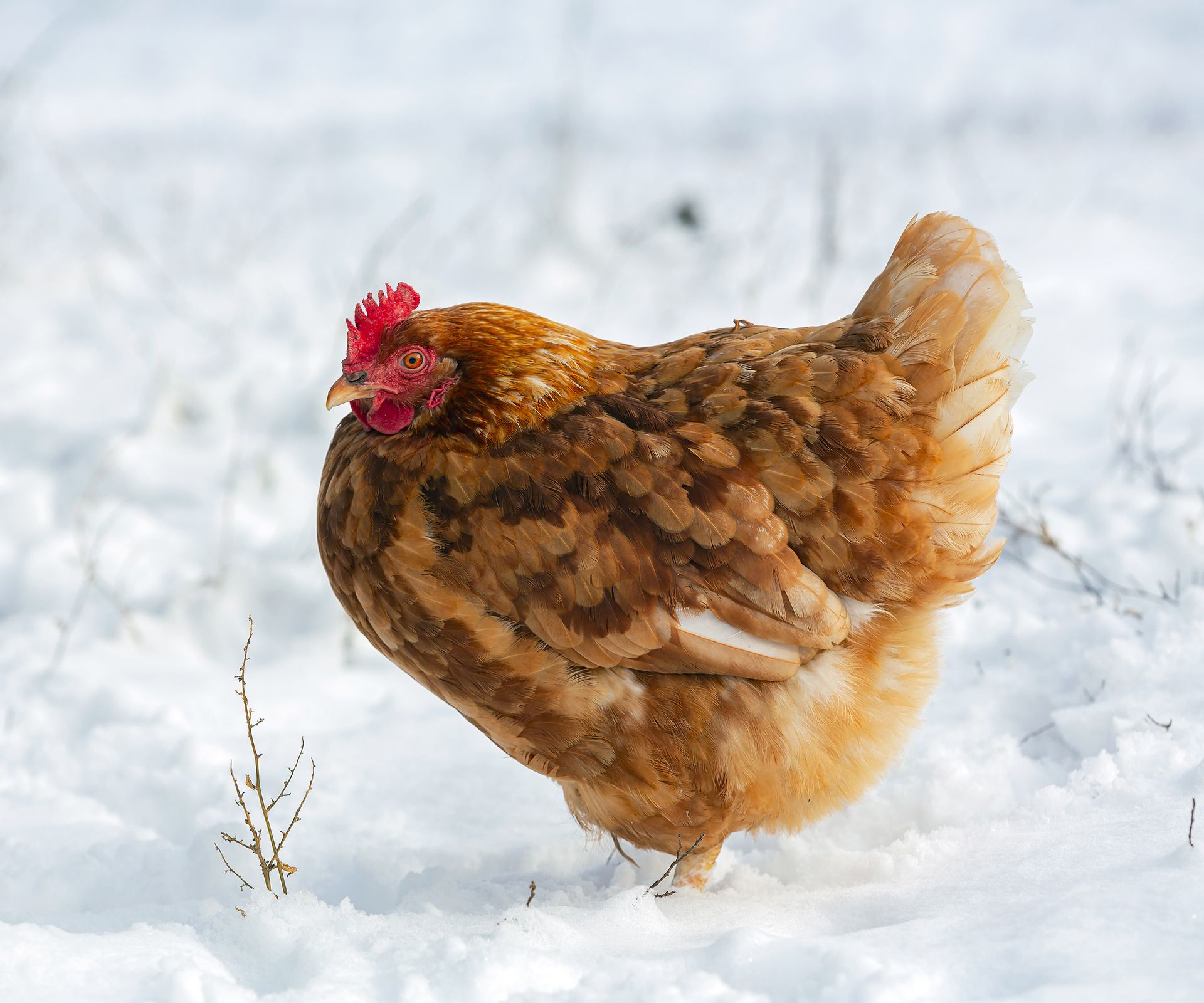
Heat lamps pose an unnecessary risk to your dear chickens
This is something that both these experts agree on categorically. ‘I don’t recommend heat lamps,’ says Lisa Steele.
‘Healthy, adult chickens in the right size coop for the flock size shouldn’t need heat. Coop, barn and even house fires are started every year with heat lamps in chicken coops. Chickens can produce a fair amount of body heat (ten chickens produce as much heat as a regular light bulb),’ she says.
‘You do need a heat lamp for chicks, but once they are fully feathered out, which is around 4-6 weeks, assuming it’s not the dead of winter, they should be fine without a heat lamp,’ says Deborah Niemann.
‘Adult chickens do not need a heat lamp or heater. As well as being counterintuitive for a fireproof backyard, a heater in a chicken coop is going to be covered in chicken poop very quickly,’ says Deborah.
6. Don’t knit them a sweater
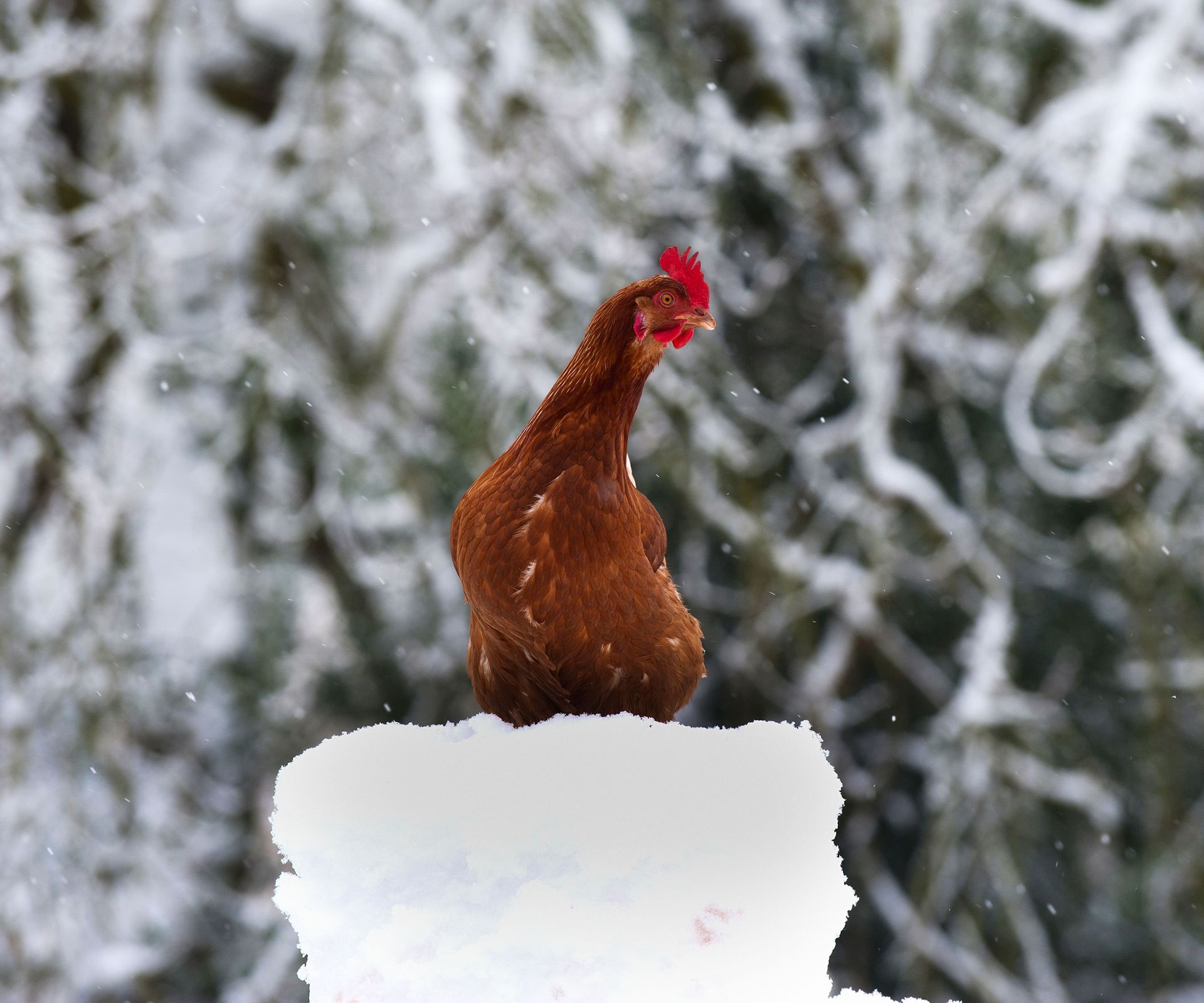
Chickens are hardier than they appear
As tempting as the image may be of a chicken wearing a knitted sweater, this is not something Deborah recommends when it comes to keeping your chicken safe and warm.
‘Please don’t fall for any silly online fads like chicken sweaters, which your chickens don’t need and actually do a lot of harm. It stops their normal grooming behaviors, and the sweater could get caught on something causing the chicken to choke or get trapped away from the waterer and dehydrate,’ she says.







